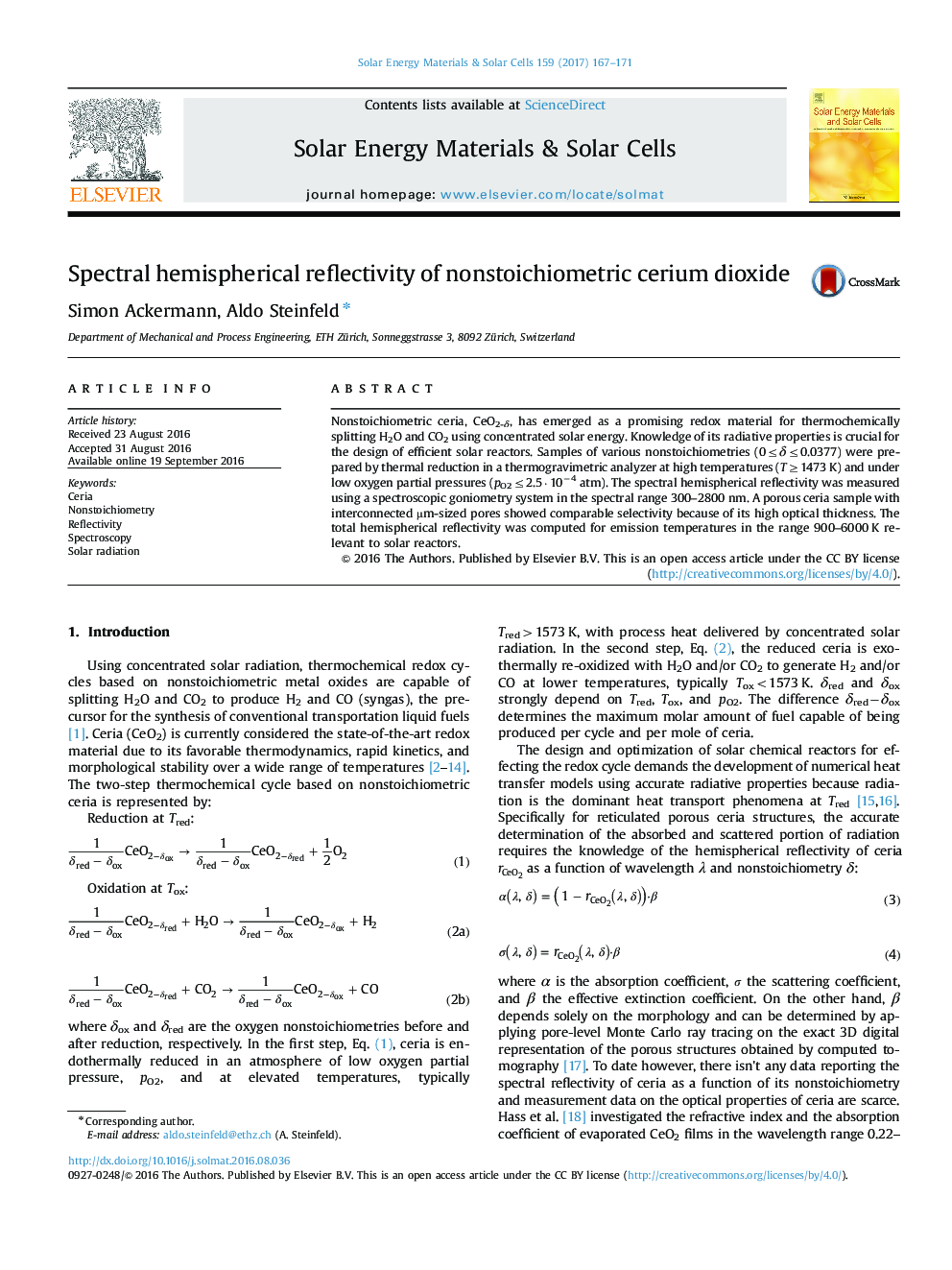| Article ID | Journal | Published Year | Pages | File Type |
|---|---|---|---|---|
| 6457468 | Solar Energy Materials and Solar Cells | 2017 | 5 Pages |
â¢Spectral hemispherical reflectivity measured for CeO2âδ, with δ in the range 0-0.0377.â¢Spectroscopic measurements covered the wavelength range 300-2800 nm.â¢Sample with interconnected μm-sized pores shows similar selectivity.â¢Empirical correlation derived for the total hemispherical reflectivity.
Nonstoichiometric ceria, CeO2-δ, has emerged as a promising redox material for thermochemically splitting H2O and CO2 using concentrated solar energy. Knowledge of its radiative properties is crucial for the design of efficient solar reactors. Samples of various nonstoichiometries (0â¤Î´â¤0.0377) were prepared by thermal reduction in a thermogravimetric analyzer at high temperatures (Tâ¥1473 K) and under low oxygen partial pressures (pO2â¤2.5·10â4 atm). The spectral hemispherical reflectivity was measured using a spectroscopic goniometry system in the spectral range 300-2800 nm. A porous ceria sample with interconnected µm-sized pores showed comparable selectivity because of its high optical thickness. The total hemispherical reflectivity was computed for emission temperatures in the range 900-6000 K relevant to solar reactors.
